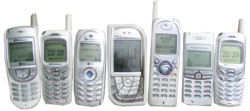This article needs additional citations for verification .(April 2012) |
Other topics in 2000s:
| Science and technology articles |
|---|
| Decades |
| Years |
This article is a summary of the 2000s in science and technology.
This article needs additional citations for verification .(April 2012) |
| Science and technology articles |
|---|
| Decades |
| Years |
This article is a summary of the 2000s in science and technology.





Beige/White had been a common color for PC cases and monitors for years. It lost popularity to other colors like black
Growth of Broadband Users:June 2000:total:4,367,434
important sub-groups in that region [high-growth areas of sub-Saharan Africa, the fastest growing cell phone market in the world,] have much higher penetration than the general population ... many [of whom] have access to one via a friend or family member
Remember, a lot of banks in third world countries have ATMs.